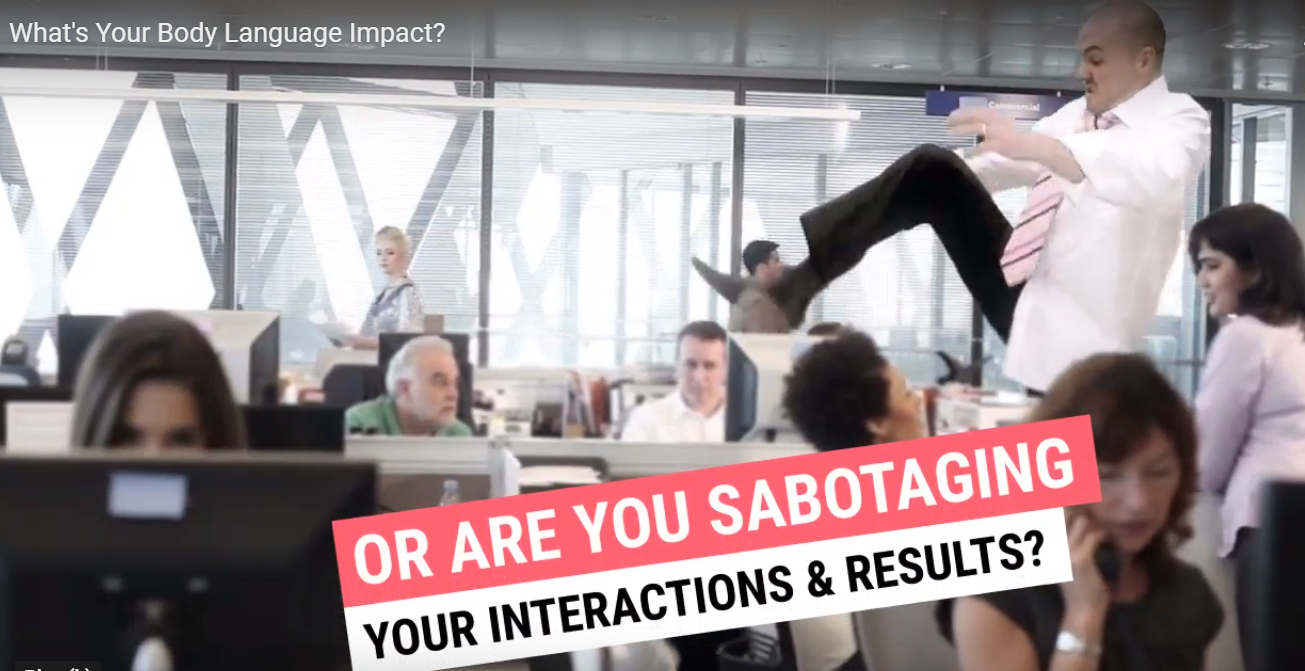In the busy world we live in stress levels often increase during the year as demand on finances, time and energy increases. If you work in a stress filled environment or find family get together’s a minefield… recognising when someone’s buttons been pushed by identifying warning signals can help you turn things around quickly.
Stress is like flu… it’s Contagious often spreading to infect everyone!
Identifying Stress Signals
Recognising non-verbal cues that reflect a range of freeze, flight or fight signs such as posture, gestures and facial expressions indicating stress can be very helpful. Despite the image someone’s trying to project these signals betray our true emotional state.
Identifying “warning bell” signs can stop the stress bug spreading so you can turn challenges into positive outcomes.
Freeze/Flight Indicators
At the freeze/flight end of the spectrum people exhibit rounded, hunched shoulders almost folding in on themselves, chin tilted down, locked ankles and wringing hands. They blink more frequently, perspire more, look flushed or very pale, frequently touch their face, rub their eyes or avoid eye contact.
Often, people use pacifying gestures such as putting objects in their mouths, self-touching/hugging, brushing off clothing or stroking hair. They use objects or body parts as barriers to feel safe, such as folding arms, sitting on hands, crossing legs and turning body parts away, eg, feet facing the door for a quick exit.
They may also exhibit micro-expressions of fear or anxiety with a tense forehead, lifted brows, tight, closed mouth, wide glazed eyes or sad drooping chin with a down turned mouth.

Warning Body Language Cues
On the fight end of the spectrum people may exhibit all of the above including invading others’ space, fast movements, gritted teeth, clenched jaw, arms and hands, using jerky or very definite larger movements, pointing or hand waving.
Search for at least three consistent signals to help support your assessment. No single body language signal is a reliable indicator, eg your client’s folded arms may simply mean she’s cold or taking time to process and internalise her thoughts.
However, if your boss’s arms are folded, with his chin down, eyebrows lowered, with a wide A-frame stance and he’s stomping around the office most of the morning, this cluster of repetitive posture, gestures and expressions suggest frustration or anger, and high stress levels.
Take Charge Overcome Conflict
In stressful or conflict situations people often hold their breath, breathe shallowly or hyperventilate, closing their posture and cutting down oxygen to the brain. This limits clear thinking, tightens the body, diminishing physical strength and confidence which lowers their ability to manage difficult situations.
To take charge of your state its important to breathe deeply, open your posture, stay calm and centered. Which is exactly the opposite of the freeze, flight or fight body language often exhibited during times of stress.
Creating a more relaxed environment with your body language during challenges enables you to manage your stress and anxiety and calms others too. By stabilising your body it’s easier to deal with difficult people and turn challenging situations around more effectively.
Take a Possibility Pause
The 1st step to Body Language Empowerment is Awareness. So “Check In” with yourself at natural stop points during the day, such as meal times and bathroom breaks.

Place a hand on your stomach, feel your feet on the floor, open your posture, stand tall, and take three slow, deep breaths down to your stomach filling up your body with oxygen. Breathe out anything that no longer serves you… stress, anxiety, fear, anger etc.
Introducing regular ‘Possibility Pauses™’ calms your whole system, releases pressure build-up and helps you develop your relax muscle to use when things get tough. It allows more oxygen to flow to your brain to be able to think more clearly and create new possibilities in each moment.
Open Your Body Language
Research shows that when you use open body movements and gestures (upright posture, arms open with palms facing up, feet forward shoulder width apart) you’re more receptive to others and can absorb more information.
Being open can help you defuse stress filled situations as others are far more likely to warm to you as you’re exhibiting a welcoming and non-threatening persona.
Walk it Off
During heightened stress, go for a short, brisk walk to allow your body to release built up adrenaline and tension enabling your body to re-balance your equilibrium.
When you’re unable to go for a walk, go to the bathroom or another room and walk fast on the spot for one minute. Then raise your arms high above your head in a triumph pose. This lowers the stress hormone cortisol and increases testosterone quickly increasing your confidence and calming your state. It works a treat!
Lighten Up
Whatever the situation, when you smile, even if it’s only internally, you lift your energy, increasing the flow of endorphins (your happy hormones) through your body to lighten your mood, so you’re more able to see the humour in difficult situations.
Create your own ‘lighten up’ folder on your phone or computer with funny and inspiring photos and videos that uplift you and make you smile when things get tough. Develop a habit of checking in to lighten up for a minimum of 5-10 minutes daily so you develop an inner resilience to see you through challenging times.
Stabilising Your Foundation Creates
More Conscious Choices!
By stabilising your body language you’re able to “be” in heightened stress situations, easily identifying warning signals in others without it having a major impact on you personally .
You’re able to be responsive rather than reactive so you can quickly determine whether to offer support, apologise, walk away, stand your ground or mirror the other person’s body language to increase trust and rapport to increase your influence and impact even in the most challenging of situations.


